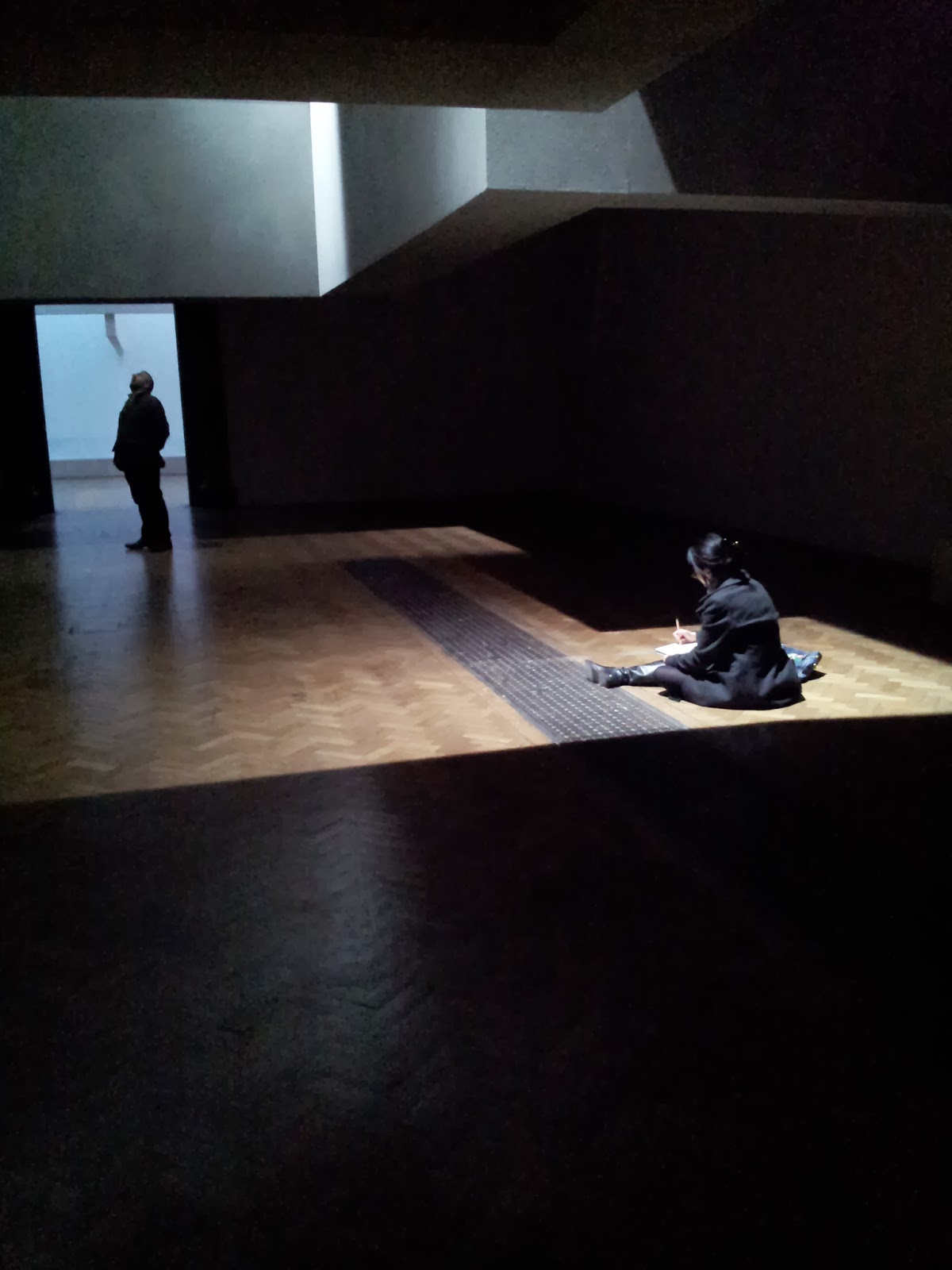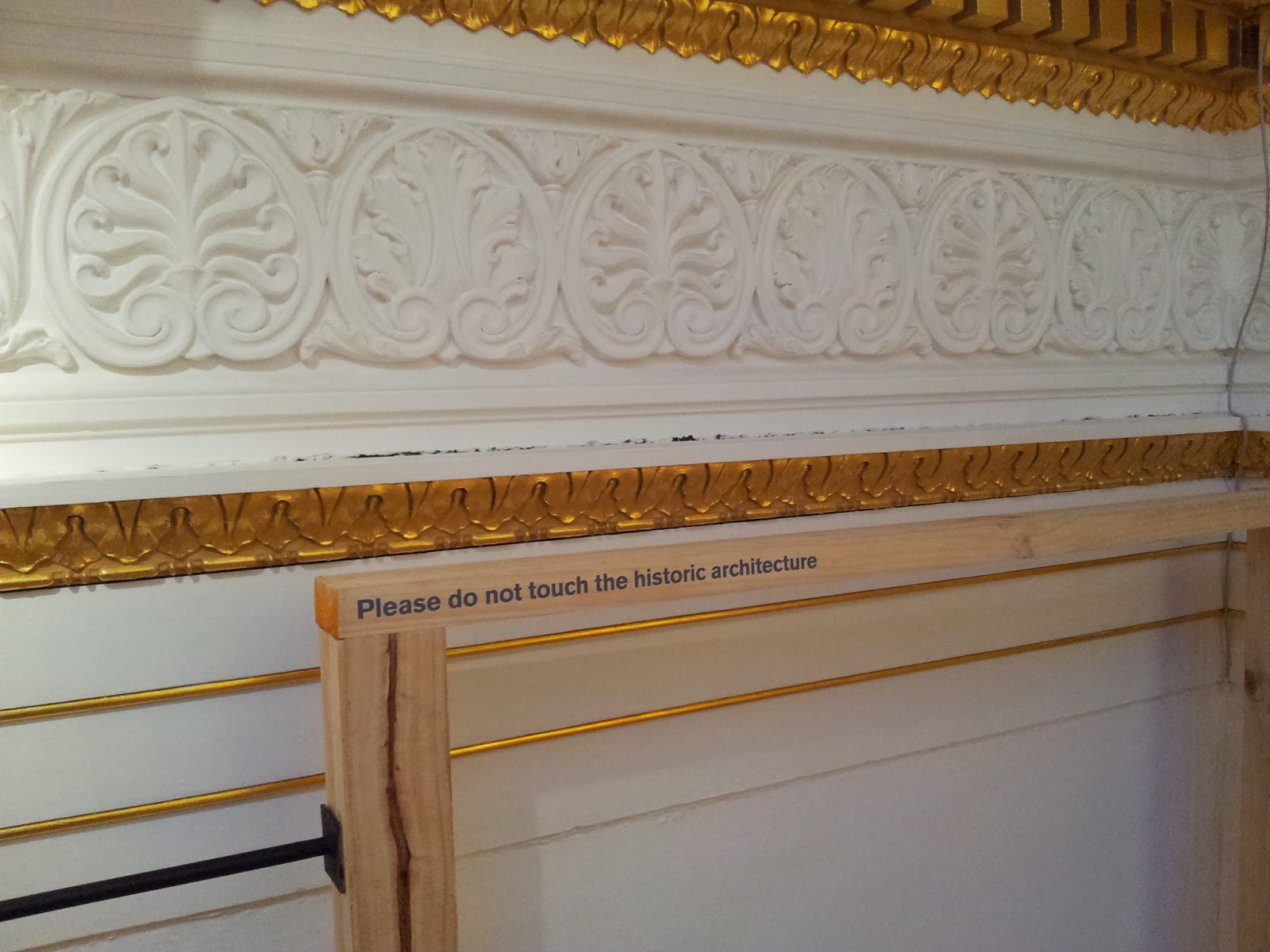 |
| Kengo Kuma's installation smelt of Tatami Mats and Hinoki wood. |
Last week I visited the 'Sensing Spaces' exhibition at the Royal Academy of Arts. I admit that I have no knowledge of architecture, other than as a frequent user, so I am reflecting upon the experience as a theatre maker instead.
The name 'Sensing Space' seems to more suitably describe the role of a scenographer, the person whose job it is, within the theatre, to map out the experience of a space both from the point of view of the performer and the audience, often providing a spatial design which blurs the boundary between the two, as might be the case for the picture I took of the Grafton Architects installation below.
The name 'Sensing Space' seems to more suitably describe the role of a scenographer, the person whose job it is, within the theatre, to map out the experience of a space both from the point of view of the performer and the audience, often providing a spatial design which blurs the boundary between the two, as might be the case for the picture I took of the Grafton Architects installation below.
All of the six architects had a sense of the theatrical, playing with the idea of audience as performer as is the case above, or as participant, as was the case with Diébédo Francis Kéré. Whose interactive design involved providing boxes of multicoloured straws for visitors to thread through the structure provided. The experience of which felt like standing within a child's drawing of an igloo which they had subsequently scribbled over with all their freshest felt tips.

None of the designs could have been described as traditionally theatrical, although Eduardo Souto de Moura did provide a proscenium arch and Pezo Von Ellrichshausen's installation (below) had a sense of the 'end on' about its approach.
 |
| Photo from the Royal Academy of Arts. |
Yet once you got close to Pezo Von Ellrichshausen's structure, you were invited to climb inside up sets of winding staircases leading you right to the ceiling, up close to the cornices and covings. Although, at this point, unfortunately we were also told, this was one aspect of the installation we were not invited to sense.
My favourite aspect of this particular installation were the peephole windows framing the gold cherubs, demonstrating how space can create a narrative by inviting the audience to move from the epic to the personal. This same sense of narrative was in place within the Grafton Architects work in which they focused on the journey of the audience, moving from dark to light. Yet, the installation which felt most reminiscent of classical storytelling was by Chinese architect Li Xiaodong (below), who had incidentally previously designed the story filled Liyuan Library.
It was probably the use of whole branches and wood chippings which made this installation make you feel like Red Riding Hood, lost in the forest. Yet the combination of labyrinthine corridors, cubbyholes and tiny windows enhanced the sense of a treacherous journey and felt most akin to the Punchdrunk's promenade style of theatre.
Whilst I was looking out for the theatrical elements in the architectural, there were a number of things to steal back from the architects, into the theatrical world. The way that architects consider not just the space itself but how people move from outside to inside the space. How they think about the light that surrounds the audience, not just the performer and how light can swap these roles and how they shape the space in such as a way as to suggest participation rather than force it.
Yet the idea I would like to steal most is the term 'visitor'. There is much talk about how words like 'audience' and 'spectator' do not do justice to the multi-sensory experience of theatre, it feels to me that 'visitor' encapsulates the idea that a theatrical experience should be considered more like a journey into a foreign land, in order that, as writer Pico Iyer, says, we 'travel initially to lose ourselves and we travel, next, to find ourselves.'





No comments:
Post a Comment